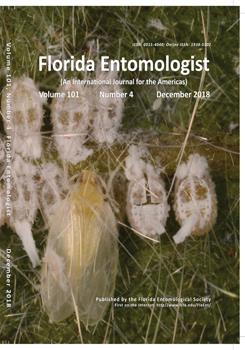An emergence trap was developed to test the hypothesis that Dasineura oxycoccana Johnson (Diptera: Cecidomyiidae) adults in cranberry, Vaccinium macrocarpon Aiton (Ericaceae), emerge from overwintering as larvae in soil throughout the spring and summer. The trap was constructed from 2 white plastic cylinders made from buckets, with the inner bucket telescoping into the support bucket. A mesh lid allowed penetration of rain and irrigation water. Wire support pegs and a skirt of landscape cloth anchored the trap to soil to prevent escape of target insects and ingress of others without damaging the mat of woody cranberry vines. Overwintered cranberry tipworms and their parasitoids were trapped on a yellow sticky card suspended inside the emergence trap. In the first year of testing, the trap detected overwintered tipworms every wk from early May to mid Aug, and overwintered parasitoids of 4 genera most wk from late May to mid Aug. It is probable that overwintered insects inside the traps emerged slightly ahead of those outside because temperatures inside traps were warmer than outside. We found that overwintered cranberry tipworms, and their parasitoids, emerge and add to the field population throughout the growing season in British Columbia, Canada.
How to translate text using browser tools
1 December 2018
A Bucket-Type Emergence Trap for Detecting Overwintered Dasineura oxycoccana (Diptera: Cecidomyiidae) and Its Parasitoids in Cranberry
Sheila M. Fitzpatrick,
Warren H.L. Wong,
Kieryn Matthews,
Snehlata Mathur,
Miranda Elsby,
Kaitlyn Schurmann,
Lindsay N. Craig

Florida Entomologist
Vol. 101 • No. 4
December 2018
Vol. 101 • No. 4
December 2018
biological control
integrated pest management
population dynamics
small fruit crop




